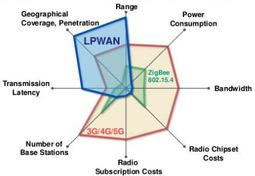Ambient Backscatter: Advantages and Disadvantages
Advertisement
This page explores the pros and cons of ambient backscatter technology. It highlights the benefits and drawbacks of using this innovative approach to wireless communication.
What is Ambient Backscatter?
Introduction: Ambient backscatter is a relatively new type of wireless communication system that cleverly leverages existing radio frequency (RF) signals in the environment to facilitate communication between devices.
Crucially, it eliminates the need for batteries by harvesting energy from ambient RF sources using a simple circuit. This makes it particularly attractive for low-power IoT applications.
Ambient backscatter makes use of readily available RF signals such as TV broadcasts, cellular tower transmissions, and Wi-Fi signals from routers.

Image courtesy: arXiv (Ambient Backscatter Communications: A Contemporary Survey)
An ambient backscatter device communicates by both absorbing and reflecting RF signals. It employs an energy harvesting circuit to convert the ambient RF energy into DC voltage, which is then stored in a capacitor to power its operations.
The harvester includes a power management system that optimizes the use of stored energy.

Image courtesy: arXiv
In backscatter communication, devices modulate the reflection of incident RF signals instead of generating their own. The backscatter receiver picks up these modulated ambient RF signals, as illustrated in the diagram.
Benefits or Advantages of Ambient Backscatter
Here are some key benefits of ambient backscatter:
- Battery-Free Operation: It doesn’t require a battery. The harvested power is sufficient to run small boards with sensors like LEDs, touch sensors, and displays.
- Low Cost: It doesn’t need specialized ICs or analog components. Ambient circuits can be built with readily available components, making it inexpensive.
- Small Size: Ambient backscatter circuits can be very compact.
- Energy Efficient: It relies on existing RF signals from sources like TV or cellular towers, making it more power-efficient as it doesn’t generate its own RF signals.
- Ideal for IoT: Due to its low energy consumption and battery-less operation, it’s well-suited for Internet of Things (IoT) devices.
- No New Spectrum Allocation: As it reuses existing RF signals, there’s no need to allocate new frequency spectrum.
Drawbacks or Disadvantages of Ambient Backscatter
Despite its advantages, ambient backscatter has some limitations:
- Lack of Control: Because it relies on ambient RF signals, it’s impossible to control the RF power level or frequency.
- Low Data Rate and Range: It typically supports low data rates and has a limited coverage range (a few tens of meters). Wider area coverage requires multiple devices.
- Limited Power: It can harvest only a small amount of electricity, which limits the number of components and devices it can power.
- Security Concerns: Dependency on external RF signals introduces security vulnerabilities. There is no control over the ambient RF signals.
- Lack of Centralized Control: There’s no central controller to coordinate communication. System designers need to develop their own protocols for specific system requirements.
 RF
RF



